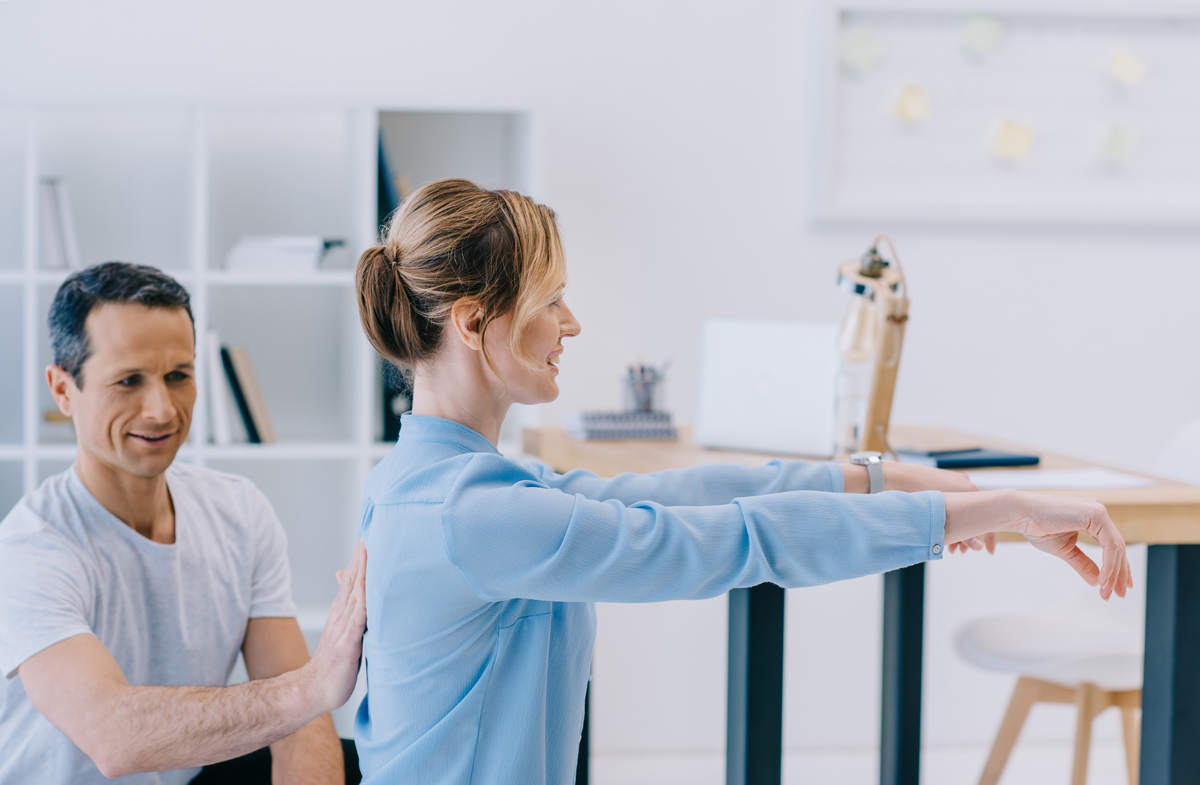Squats: Five Things to Consider
The fitness community has some how deemed the squat the king of all exercises. “They” say it’s great for your glutes (Butt), Quads, hamstrings, total body challenge, it’s “functional” weight loss, etc. The list goes on. I’m not saying there isn’t some truth to all those things in the right context. They just aren’t absolute truths like some magazines or trainers may claim. Here’s a list of 5 things to consider when squatting or even deciding if a squat is an appropriate exercise for you.
1. What’s Your Goal?
What part of your body are you trying or wanting to work? If you have a specific target area you would like to address, your squat should match that goal. Not every squat is the same or works the same things, especially with each person having different limb lengths (Tibia, femur, & trunk). Picture this, if you squat down and your line of force is further away from your knee joint (Big Moment Arm), you’re mostly working your anterior knee muscles. Conversely, if you squat down and your line of force is further away from your hip joint (Big Moment Arm), you’re mostly working posterior hip/low back muscles. Neither are good or bad, right or wrong. It just depends on your goal.
2. Lever Lengths (Limb Lengths)
Your proportions play a role in how you’re going to squat. If your tibia (shin bone) is a lot shorter than your femur (leg bone), and your trunk (torso) is very long, your squat will look vastly different from a person who has equal length from there tibia, to there femur, and trunk. The goal of the body when it’s standing is not to fall. It’s about keeping your center of mass over your base of support. In order for that to happen, you’re going to have to modify the way you fold up in a squat to not fall over. While you do that, the forces at other joints are going to change, for example hips, knee, spine, etc… again, what’s your goal?
3. Resistance Profile/ Strength Profile
A squat has a very distinct profile. Relatively balanced at the top of the motion and very hard at the bottom. There are several ways to account for this. Many people think they have to do everything through a “full range of motion”, but you don’t. In a situation like this, you can simply use different loads (weights) at different points in the range of motion to match the profile. For example, at the top of the motion use a heavier weight where your strongest and go down a little bit. Then drop the weight and go down lower where you are weakest with the lighter load. This way you can challenge the full range of motion you have available without sacrificing the load. Your joints will thank you.
4. Holding Dumbbells/KettleBells vs. Bar on Back/Front
This is a topic that I don’t think is discussed a lot. If you’re holding a dumbbell/kettlebell while doing a squat, what do you think is going to give out first? Your ability to grip and hold the dumbbell/kettlebell or the tolerance of your whole lower body and spine? Again, it goes back to what’s your goal? If your goal is hypertrophy and/or strength in those muscles then using an appropriate load to challenge them is necessary. I’m not saying you can’t hold dumbbells or kettlenbells, I’m saying this is something to consider. If the bar is resting on your upper back or front, you don’t have to worry about holding it. You just have to balance it.
5. Available Active Range of Motion
Before you decide to squat, I would suggest checking all the motions of the squat and making sure you have those ranges available to you (Dorsiflexion, Hip Flexion, Knee Flexion, Spinal Flexion, Spinal Extension, Hip Extension, Knee extension, PlantarFlexion). If you see a difference relative to the other side, assuming there is no structural abnormalities, you may want to consider doing an isometric. You can use that as a warm-up. For the isometric, contract into the position of limitation for about five seconds at approximately 50% of effort. Repeat 3-5 times.
I hope these tips will help you, or at least make you think about some things that otherwise you may not have considered.
Dominick Nusdeu has been certified as a Personal Trainer for over 20 years. He holds the distinction of Muscle System Specialist, Resistance Training Specialist, ACE Orthopedic Exercise Specialist, as well formally being one of only 14 Instructors of Muscle Activation Techniques worldwide and was one of only 85 Master Level Muscle Activation Techniques Specialists in The World. Dominick has completed well over a 2000 hours of advanced coursework in biomechanics, exercise mechanics, neuroscience, anatomy, physiology, and muscle function. Dominick is a trainer to the trainers, teaching his highly successful course, “Decision Making 101: From the Table to the Floor.” He currently owns and operates MotionMechanix (MMX), Muscular System Optimization LLC, and MotionMechanix Academy, which was formed out of a need to give fitness enthusiasts and current exercise professionals quality, high level education backed my science, not what’s currently trendy or “cool”.
